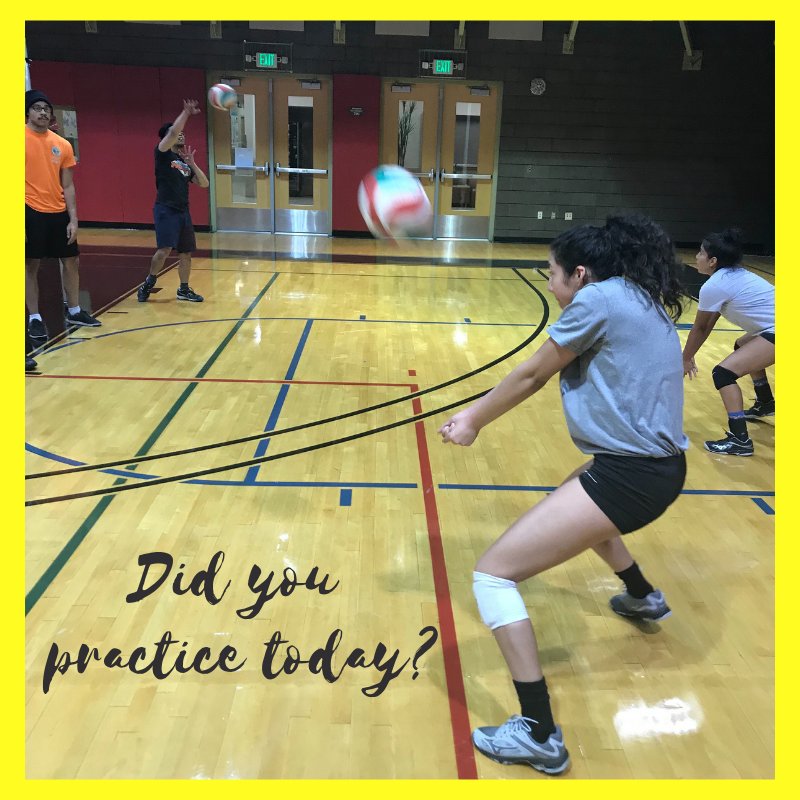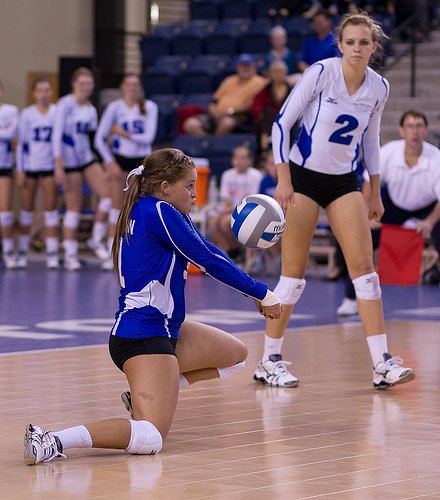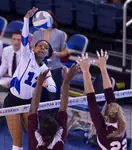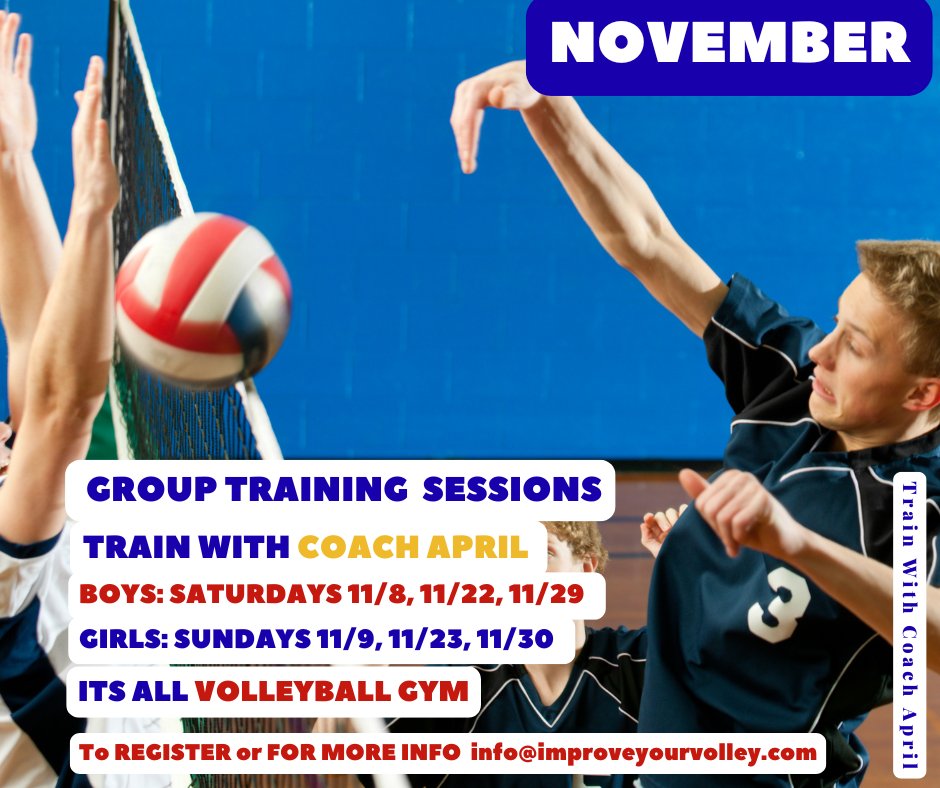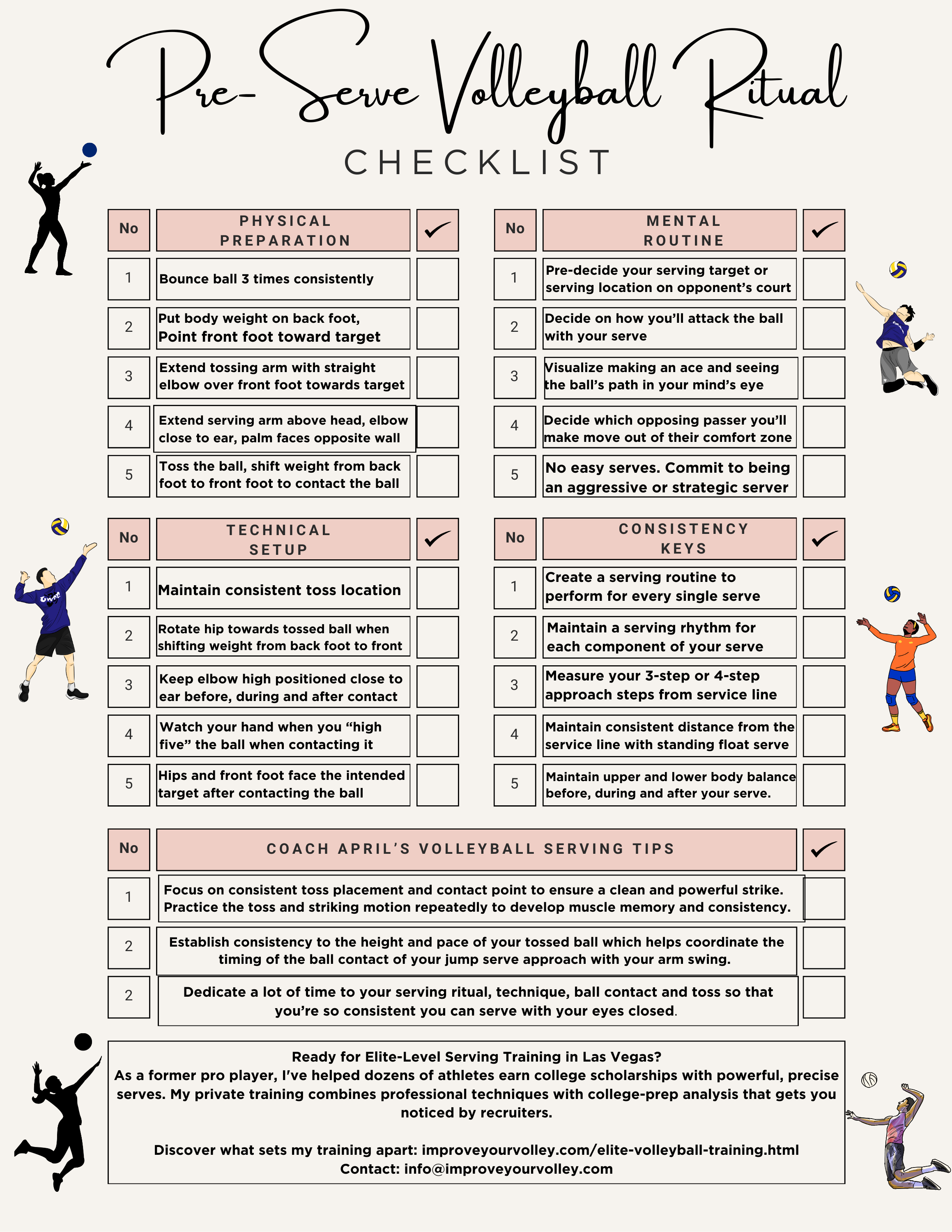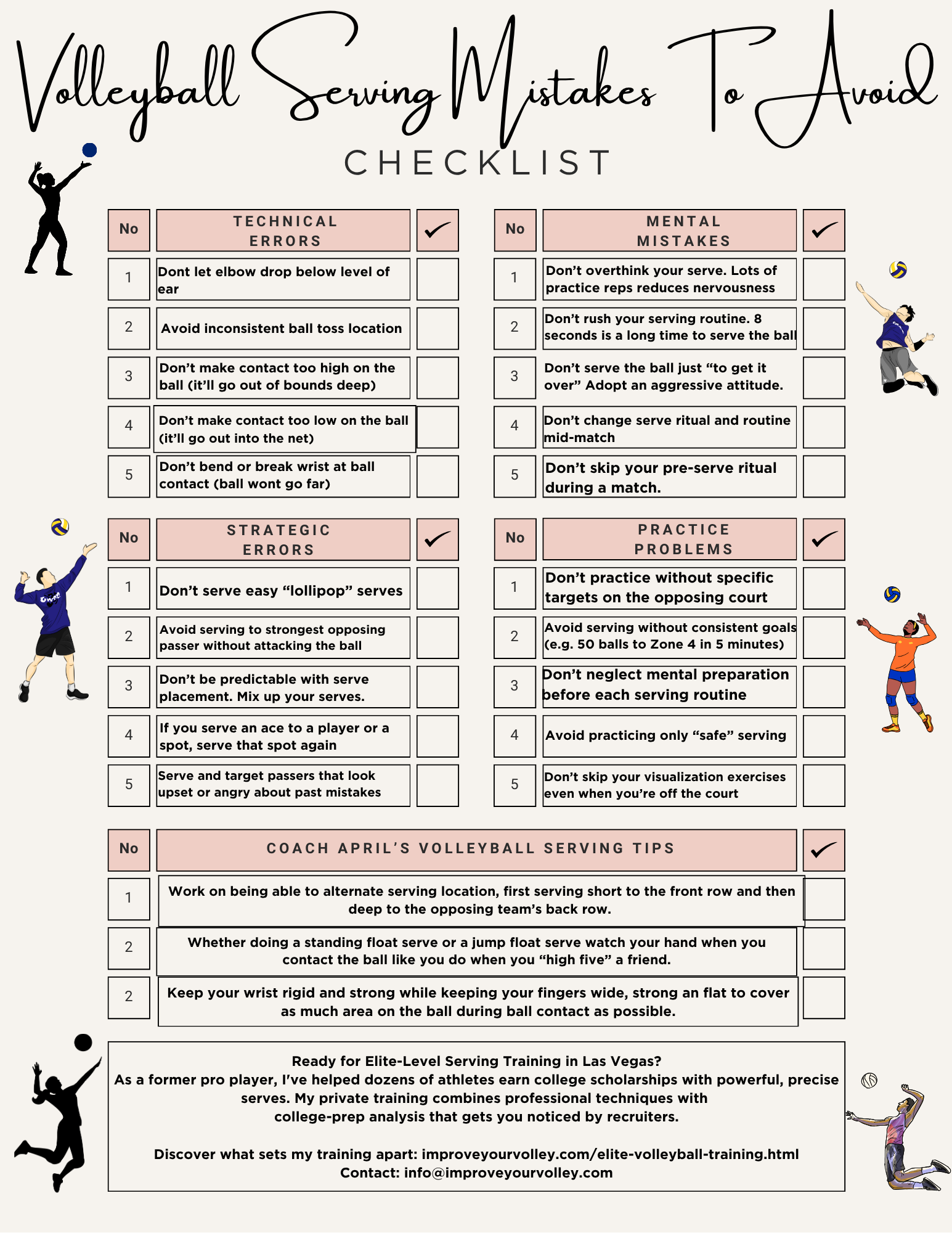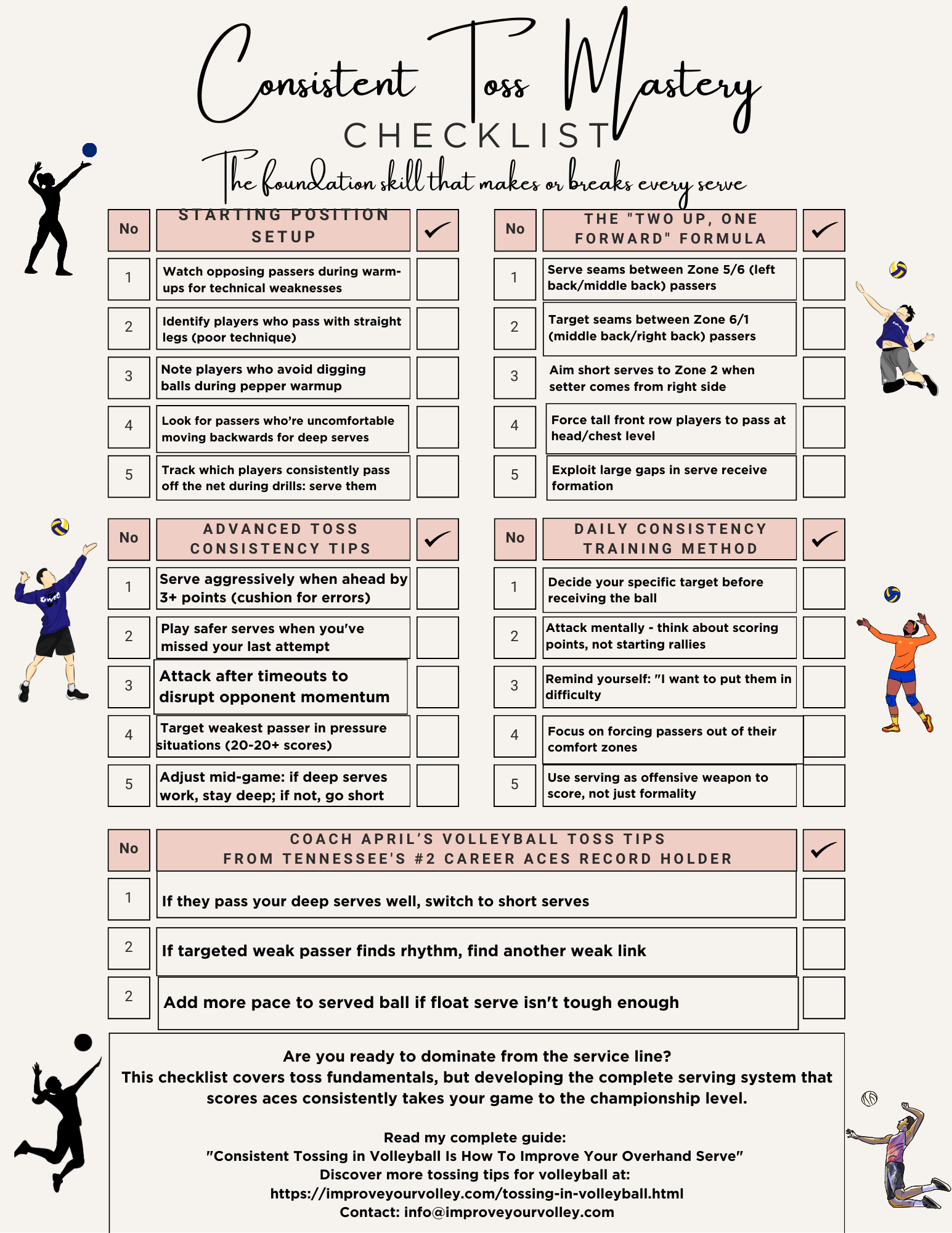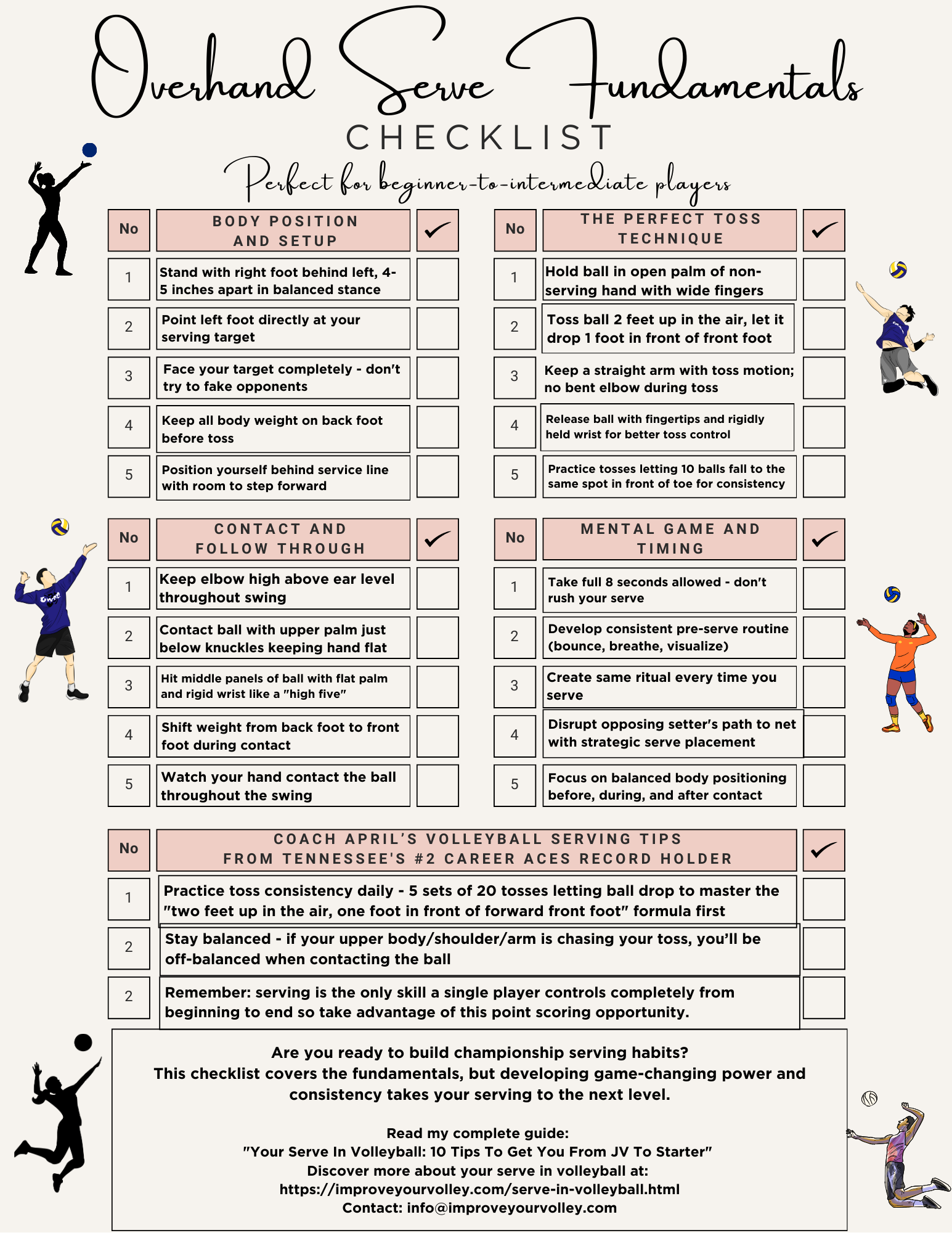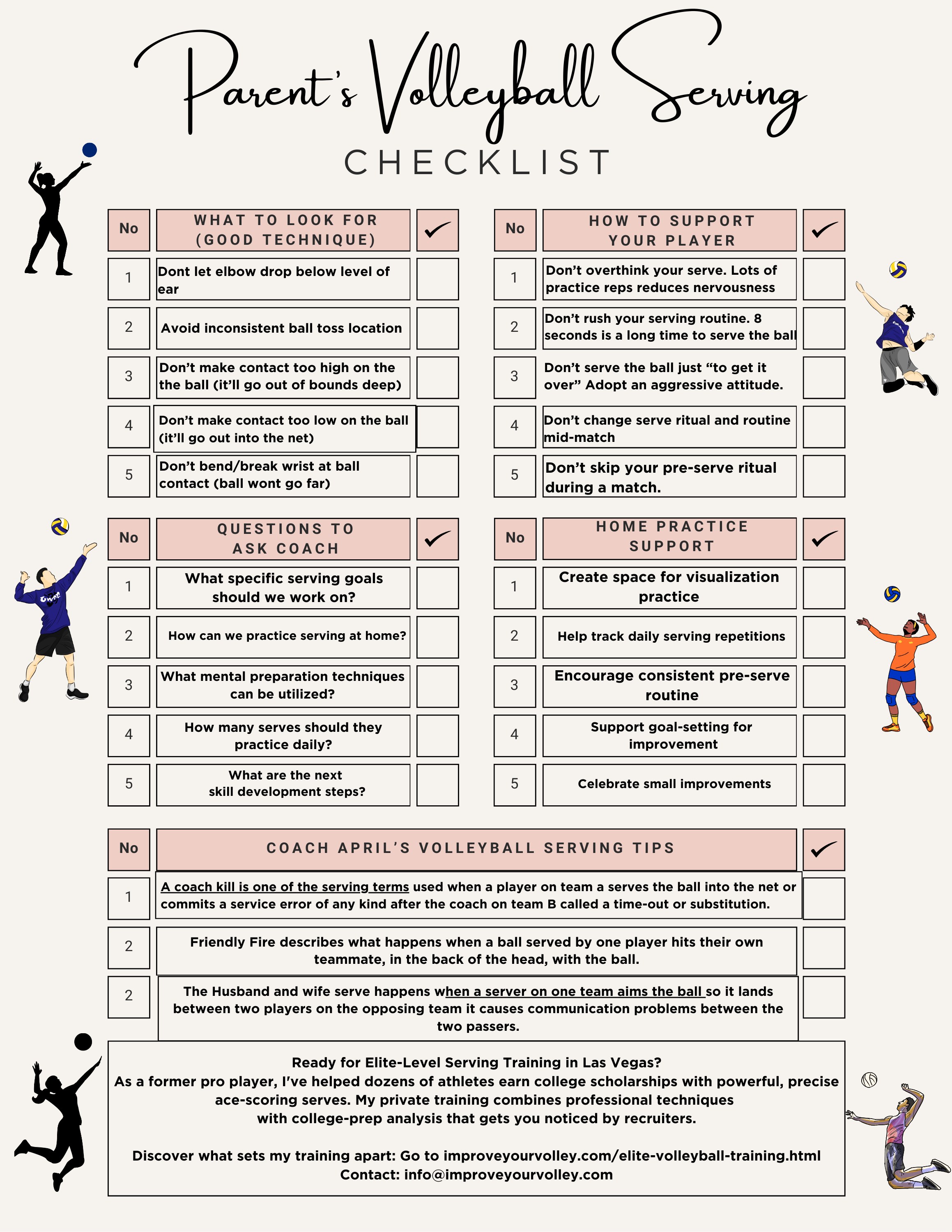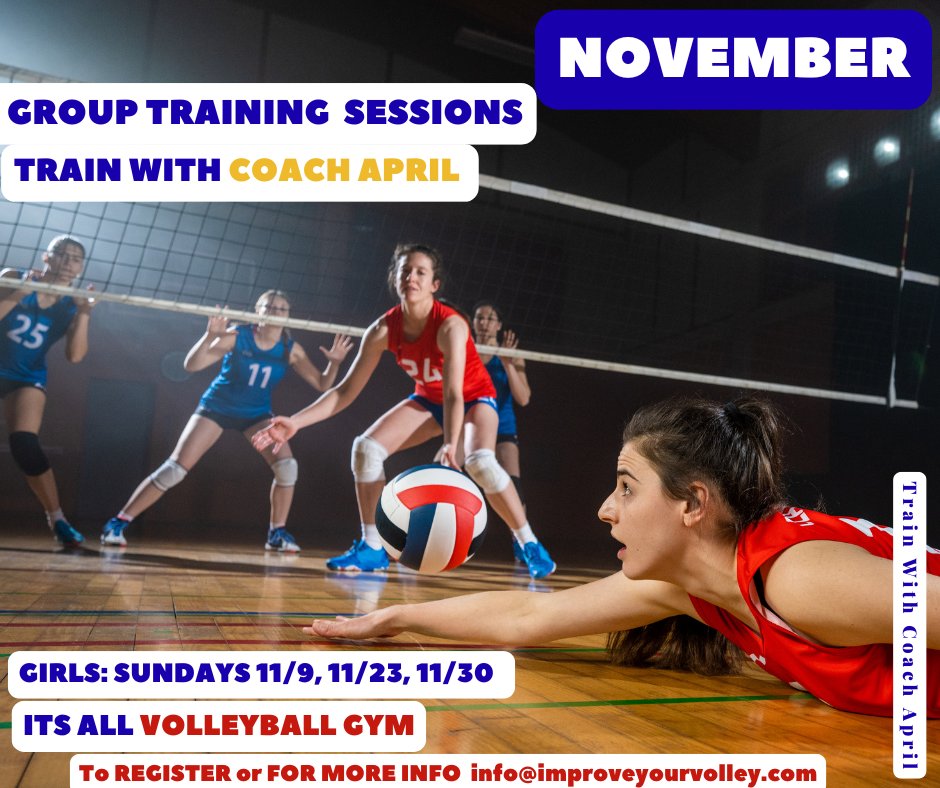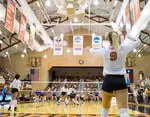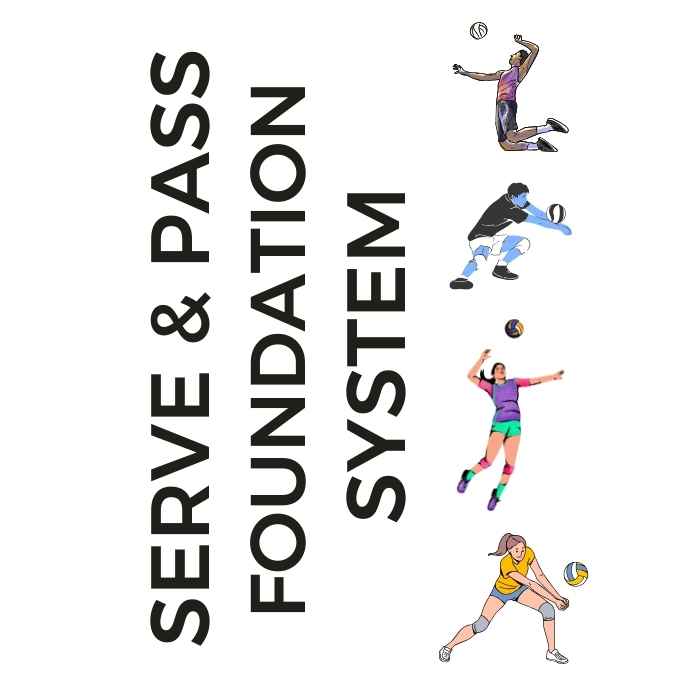
Serve + Pass Foundation System: The Complete Skills Arsenal The two-skill mastery system that transforms inconsistent players into the athletes coaches build their lineups around. Stop Struggling With The Two Most Important Skills In Volleyball!
- Improve Your Volleyball with Coach April
- Volleyball Drills for Digging
- Volleyball Digging Drills That Will Help You Keep Balls Off The Floor
Volleyball Digging Drills That Will Help You Keep Balls Off The Floor
We do a lot of progressions for volleyball digging drills in our boot camp classes to cover different scenarios from hard hits to balls you need to chase down.
We do volleyball digging drills everyday in our Volleyball Voice Boot Camp classes so that liberos, defensive specialists and players who play in the backrow work on improving their digging skills.
If you are the defensive specialist or libero on your team, or a player looking for individual defensive drills, then you need to have great digging technique and accuracy.
It takes a lot of practice reps to be able to defend a ball back up from the back row to the front row.
It takes a lot of practice reps to be able to defend a ball back up from the back row to the front row.
(Watch Adlai and Sierra Leone work on ball control during one of our partner pepper volleyball digging drills in our Boot Camp training sessions.)
That's why we do a lot of volleyball digging drills during our practices in order to coordinate what happens between the front row blockers and the back row defensive specialists and liberos on a team.
The partner Hit and Dig ball control drill is one of our warmup volleyball digging drills we often do in Boot Camp or Semiprivate Training classes.
Jacob (hitting) and Adlai (digging) work on the very advanced version of the hitting and volleyball digging drills we do in Breakfast Club.
The goal in doing these defensive technique volleyball digging drills is to work on controlling a hard driven ball back to the target you are aiming for...preferably without making the target move.
Four Volleyball
Digging Drills
The Pressure Repetitive Hitting Drill
One digger is placed in the middle of the court with myself and one or two of my assistant coaches on the same side of the net as the diggers.
Coaches are in Zone 4 and Zone 2 and sometimes in Zone 3.
Hitters and diggers half court distance apart.
What are we working on in this drill?
Players are working on reading the ball -getting information from the spiker's arm and at the same time reacting quickly but under control while digging the ball high in a high intensity pressured situation.
Players are also working on
- hips dropping lower than the oncoming ball
- eyes focusing on spiker's hitting arm for quick second then keying in on the oncoming spiked ball and its travel path,
- keeping platform arms straight with no bent elbows and away from the body...closer to the ball
- making a playable ball 8 -10 feet in the air..
- after the dig working on making a quick quarter turn to face the next coach that's hitting
Common Mistakes and
Effective Digging Techniques
Practice makes perfect, but only if you’re practicing correctly.
Here are some common errors often made during digging drills, along with useful tips to help you execute these drills more effectively.
**Mistake 1: Incorrect Body Position**
Often players stand too straight or lean backwards with their shoulders behind their knees instead of in front of their knees. This slows you down and makes effective digging nearly impossible.
**Tip**:
Maintain a low, athletic stance. Your feet should be slightly more than shoulder-width apart with your knees bent. Lean slightly forward - this will make it easier to move quickly.
**Mistake 2: Not Keeping Eye on the Ball**
Many players miss the ball because they lose sight of it or they take their eye off the ball for a millisecond.
**Tip**:
Visual tracking is crucial. Keep your eyes on the ball from the moment it's hit until it contacts your platform.
**Mistake 3: Swinging the Arms**
This is a common issue that happens when platformed arms are too close to your body and then you swing them away from the body while contacting the ball.
**Tip**:
When digging, minimize arm movement. Your platform should be formed early, pointing to the target, allowing the ball to rebound off for a controlled pass.
**Mistake 4: Incorrect Platform Formation**
Sometimes players form their platform too late or have a bent elbow, which may result in poor control over the ball.
**Tip**:
Form your platform early with straight arms and locked elbows. Your thumbs should be pointed towards the ground to create a flat surface.
**Mistake 5: Being Static**
A lot of players maintain the same position, hoping the ball will come towards them.
**Tip**:
Stay on your toes and be proactive. Move to the ball rather than waiting for it to come to you. Remember, in volleyball, staying in motion is key.
Remember, improving your digging skills will come with practice and time. So, don't rush yourself. Take the time to work through each drill and technique. With patience, consistency, and correct practice, you will see progress!
Frequently Asked Questions about the Libero Position in Volleyball
Q: What is the libero position in volleyball?
A: The libero position is a specialized role in volleyball focused on defensive skills, such as digging and passing. The libero wears a contrasting color jersey and has specific rules and responsibilities within the game.
Q: Can a libero serve in volleyball?
A: Yes, liberos are allowed to serve the ball. They can utilize their defensive skills to make accurate and strategic serves, contributing to the team's overall performance.
Q: How is the libero position different from other positions in volleyball?
A: The libero position differs from other positions in that it has specific substitution rules, defensive responsibilities, and jersey color requirements. The libero specializes in defensive skills and is restricted from certain offensive actions, like hitting from the front row.
Q: What are the responsibilities of a libero player during a game?
A: The libero's main responsibilities include serve receive, defensive positioning, accurate passing, and facilitating smooth defensive-to-offensive transitions. They are crucial to the team's defensive strategy and excel in ball control and reading the opponent's attacks.
Q: How does a team benefit from having a libero?
A: The team benefits from having a libero as they provide exceptional defensive skills and enhance the overall defensive capabilities. Their specialization allows other players to focus on their offensive roles, while the libero maintains stability and control in the backcourt.
Q: Can a libero set the ball to their teammates?
A: Yes, a libero is allowed to set the ball to their teammates, providing accurate passes to facilitate offensive attacks. However, their primary focus is on defensive skills, and setting is a secondary responsibility.
Q: Are there any specific rules regarding the libero's jersey color?
A: The libero is required to wear a jersey that is a uniformly contrasting color to their teammates. This visual distinction helps officials and spectators identify and track the libero's movements and substitutions.
Q: How many substitutions can a libero make during a match?
A: The libero is allowed to freely enter and exit the game without counting towards the team's traditional substitution limits. This flexibility allows teams to strategically optimize player rotations and maintain a strong defensive presence.
Q: Can a libero switch roles or positions during a game?
A: No, once a player is designated as the libero for a match, they must remain in that position for the entire duration of the match. Libero substitutions are specific to the designated player they are replacing and cannot be changed during the match.
Q: What distinguishes a libero from other players on the court?
A: The libero has distinct characteristics that set them apart from other players. They wear a different colored jersey to easily identify their position and have specific rules that limit their offensive involvement, such as restrictions on hitting from the front row.
Q: Can a libero serve in volleyball?
A: Yes, the libero is allowed to serve the ball in volleyball. While their primary role is focused on defense, they can contribute to the team's performance by delivering strategic and accurate serves.
Q: How many liberos can a team have on the court during a game?
A: Each volleyball team is allowed to have only one libero on the court at a time. This rule ensures that the libero position maintains its specialized role and purpose.
Q: Are liberos allowed to attack or block the ball?
A: No, liberos are not allowed to attack or block the ball when positioned in the front row. Their role is primarily defensive, focused on digging, passing, and facilitating efficient offensive transitions.
Q: Can a libero switch roles or positions during a game?
A: No, once a player is designated as a libero for a match, they must remain in that position for the entire duration of the match. Libero substitutions are specific to the designated player they are replacing and cannot be changed during the match.
Q: How does the libero's jersey color aid in tracking their substitutions?
A: The libero wears a contrasting colored jersey, distinct from their teammates, which helps officials and spectators track their substitutions. The visual cue provided by the jersey color aids in accurately recognizing when the libero enters or exits the game.
Q: What are the responsibilities of a libero in serve receive?
A: In serve receive, the libero is responsible for being the primary passer who handles the opponent's serve with accuracy and consistency. They must excel in reading the server's techniques and deliver precise passes to set up offensive plays.
Q: Can a libero set the ball to their teammates?
A: Yes, liberos can set the ball to their teammates. While their primary role is defensive, they possess the skill and capability to deliver accurate sets to facilitate offensive attacks.
Q: How does a team benefit from having a libero on the court?
A: A team benefits from having a libero in many ways. The libero is highly skilled in defensive techniques, improving the team's ability to dig difficult balls and establish strong defensive plays. Their presence allows other players to focus on their specialized offensive roles, enhancing overall team performance.
Remember, these answers provide a general overview of the libero position in volleyball. Specific rules and regulations may vary depending on the league, level of play, and individual team dynamics.
Do You Follow Me on Pinterest?
 Private or semiprivate volleyball indoor/sand lessons are an excellent way for young Las Vegas high school volleyball players to quickly improve their individual skills through a private or semi-private coaching experience.
These lessons are conducted by former pro volleyball player, former USA Volleyball High Performance instructor and Evaluator and Tstreet Vegas 18s head Coach April Chapple on a weekly basis.
Sign up now!
Private or semiprivate volleyball indoor/sand lessons are an excellent way for young Las Vegas high school volleyball players to quickly improve their individual skills through a private or semi-private coaching experience.
These lessons are conducted by former pro volleyball player, former USA Volleyball High Performance instructor and Evaluator and Tstreet Vegas 18s head Coach April Chapple on a weekly basis.
Sign up now!Follow me on Pinterest Volleybragswag to improve your game even faster!
I share alot of individual, partner and easy-to-do volleyball serving drills we do in class with my followers.
Many of these volleyball practice drills you can do at home by yourself or try at your next practice with your teammates.
If you're a B team or JV player trying to make varsity next year...your goal should be to complete 1000 reps a day of at least three of the basic skills on your own...volleyball passing, serving and setting should be at the top of the list.
If your athlete struggles with consistent serve receive, gets subbed out, or is overlooked for playing time—this is the fix you’ve been looking for.

Struggling with passing consistency?
I help talented passers tired of getting pulled from games because of inconsistent serve receive skills BUILD passing confidence without expensive private lessons using the same 3-step system that's helped dozens of my athletes get recruited.
Download my eBook for $17.99 and start building the passing confidence that keeps you on the court—and gets you seen by college coaches.
From Lady Vol to Legend: Coach April Produces Powerful Passionate Players...is that you?
What Are You Looking For?
Click to Download Your Pre Serving Ritual Mastery Checklist pdf:
🎯Volleyball Pre Serving Ritual Guide -
Players! Learn How To Transform Your Serve from Weak to Weapon
Click to Download Your Parent's Volleyball Serving Checklist pdf
🎯Parent's Volleyball Serving Checklist Guide
Parents! Help Your Player Develop Championship Serves (Even If You've Never Played)

Hi there!
Thanks for stopping by. Hope you learned something today that will help you reach your volleyball goals.
Be sure to subscribe to my email newsletter so you can learn more each week!
Stay strong! Stay motivated!
-Coach April

SUSCRIBE to my email newsletter below!
 Click to learn more about the weekly volleyball classes and clinics or email info@imrpoveyourvolley.com for information
Click to learn more about the weekly volleyball classes and clinics or email info@imrpoveyourvolley.com for informationCongratulations to my seven Boys-18s Vegas Volley club players who played in two state championship finals yesterday, the 3A and 5A State champinship finals at Sunrise Mountain High School.
TOURNAMENT CHAMPIONS!
A-1 Vegas Volley VBC
In It To Win It Tournament
May 2 - 4, 2025 Tournament
Gold Medalists
18s Premier Division
Vegas Volleyball's Unsung Heroes: Celebrating Moms with Peace Love Volleyball Shirts
Ready to energize your volleyball mom journey?
Subscribe to my 'Producing Powerful Passionate Peaceful Players' email list above on ImproveYourVolley.com.
You'll receive energy-boosting tips, exclusive insights from me, Coach April Chapple on maintaining momentum in volleyball.
Let's power up the Vegas volleyball scene together!
Recent Articles
-
5 Essential Serving Tips from Tennessee's #2 Career Aces Record Holder
Dec 09, 25 11:39 PM
I've identified the 5 essential serving tips that separate confident servers from struggling ones and you'll serve with the confidence that creates aces -
The Volleyball Toss How Consistent Is Your Ball Toss Before You Serve?
Dec 07, 25 12:29 AM
The volleyball toss for the overhand serve needs to consistently be two feet up in the air and one foot in front of front foot which puts the ball in front of your serving arm. -
Shop Small: Real Volleyball Training With + Results From A Real Coach
Dec 03, 25 10:30 AM
Support a woman-owned business. Get training from a former elite pro with 13+ years coaching experience. Ditch the big box store--invest in proven results.
